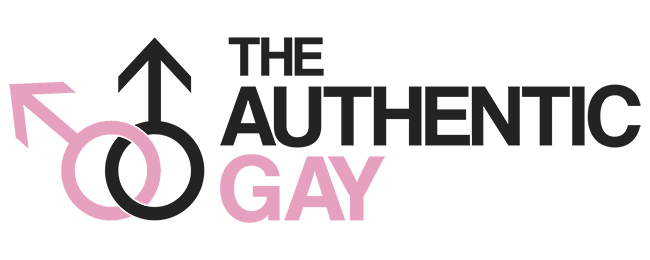What Does Androsexual Mean? A Deep Dive

Androsexuality is a relatively new sexual orientation label used to refer to individuals who find masculine traits and expressions attractive, regardless of the sex or gender identity of those they find appealing.
Terms such as sexual orientation can be unfamiliar and sometimes complicated for those unfamiliar. It is ultimately up to you whether or not to disclose it when dating new people.
Attraction to perceived masculinity
Many people use the term “androsexuality” to refer to their attraction to men and masculine people, creating a more inclusive sexual orientation label than traditional homosexuality or heterosexuality. But androsexuality should not be confused with masexuality or minsexuality, which also describe an attraction to male traits; whether or not you choose to identify yourself as an androsexual ultimately depends on personal choice.
Misconceptions about androsexuality often include that you must only be attracted to men or the male binary, when this is actually not true; androsexuals can be attracted to anyone who displays masculine characteristics or traits, be they cisgender men, transgender men, or nonbinary individuals.
Androsexuality may co-occur with other identities, including bisexuality or gynesexuality, though it should be remembered that androsexuality differs from asexuality, which describes a lack of any sexual attraction towards anyone or anything.
Androsexual individuals tend to experience strong emotional attachments to masculinity and may find themselves drawn to specific aspects of male bodies or lifestyles. Although the nature of each attraction differs for each person, finding balance in life will ultimately bring happiness and fulfillment.
One of the keys to maintaining healthy relationships is open communication and trust between partners, especially when discussing sexual orientation. Although being honest about your sexuality can be useful, if this feels right for you, then that option should also be available.
If you feel comfortable coming out as androsexual, it is possible to maintain healthy relationships with both friends and family. Just ensure that communication regarding feelings and needs is communicated openly while being considerate of everyone’s feelings and needs as well. If talking about your sexuality is uncomfortable for you right now, that is also okay; later on, when you are ready, you can always come out.
Gender identity
Gender identity is a core aspect of their sexual orientation for many androsexual people, since gender is an inherently fluid concept that changes over time. Unfortunately, not everyone understands this fluidity, which can make revealing their sexuality to friends and family more challenging than anticipated. When talking with loved ones about your orientation, it’s best to remain understanding and open-minded; if someone reacts negatively, it might help to educate them in an educated manner on what androsexuality means to you.
Androphilic is another term often used to refer to this sexual orientation; it is similar to androsexual but less clinical and may put some people off. Some prefer terms like minsexual, mascic, toric, or viramoric as they’re less gender binary and provide more options when looking for partners. Whoever the name might be, anyone attracted to perceived masculinity such as style, mannerisms, or how someone looks can identify as androsexual; whether sexual attraction exists or it could just be more of an emotional or aesthetic attraction than sexual attraction – regardless of its name!
While some individuals who identify as androsexual are drawn to men, this isn’t always the case; some transgender people also identify as androsexual due to being attracted to masculine traits such as body shape and facial hair, which are found in both cisgender men and pre-surgery transgender women.
Androsexuality is often misunderstood as heterosexuality, the latter of which refers to preferring one gender over the other. But this is not accurate, as androsexuality can occur among people of all ages and races – famous and influential people such as Mahatma Gandhi, Martin Luther King Jr. and Nelson Mandela have all been androsexual.
Androsexuality is an integral part of LGBTQIA+ community. To best support them and ensure they do not experience discrimination, listen to and use their preferred pronouns; respect their gender identity without making assumptions regarding sexual behavior or preferences; listen when people say things out loud that could make a statement against discrimination against androsexuals; use preferred pronouns when speaking about them if possible – these measures will go a long way to making life better!
Relationships
As LGBTQIA+ rights have advanced over time, androsexuality has become more mainstream sexual orientation; however, it is still underrepresented in popular culture due to intersecting identities such as being transgender or genderqueer – making accurate portrayals challenging in media and entertainment.
Androsexuality differs from homosexuality in that it is not limited to just male members. Attractors to this form of attraction include all aspects of masculinity, including physical, mental, or emotional characteristics, as well as appearance factors such as mannerisms or clothing style; it could even extend further by drawing inspiration from how someone acts or their temperament or personality traits.
People may identify as both androsexual and transgender at the same time, creating confusion for those unfamiliar with the term. A cisgender straight woman could use “androsexual” to refer to her attraction to men while still belonging to both communities simultaneously; this might be seen as “appropriating” by members of the genderqueer community; therefore, it is essential that we respect each person’s gender identity instead of making assumptions based on appearance about what kind of sexuality or romance they may have.
Androsexuality has several definitions but generally refers to individuals who are drawn to men or have masculine characteristics. It can include both women and men alike, as well as non-binary people who present as masculine; some individuals may prefer using the term mascophilia instead due to being less restrictive.
Owing to widespread misinformation surrounding androsexuality, it’s important to keep this in mind: sexual orientation doesn’t define who we are as people or the interactions we have with one another – people can be attracted to men, women, or both, and it is perfectly okay if someone dates only one gender. There is nothing wrong with expressing yourself to those you care for and revealing your sexuality as part of who we are as individuals.
Coming out
If you are androsexual, it’s essential that you know how to come out safely. This requires being open and honest with those closest to you while being prepared for any negative responses they might show. Coming out can be liberating, allowing you to truly express who you are while also meeting like-minded individuals who share similar interests.
Androsexuality refers to any sexual orientation characterized by attraction towards males or stereotypical masculine characteristics, often perceived as masculine traits. While androsexuality and homosexuality can often be misunderstood as synonyms, they differ significantly. Homosexuality requires one to identify as male at birth, while androsexuality applies equally well across genders or non-binary statuses.
Many androsexual people view being attracted to men as something positive; however, there can be various ways of describing this attraction. Some prefer using terms such as androphilia or androphilic instead; these refer to an attraction based on physical characteristics rather than gender identity and may lead to transphobia and genitalism, among others.
If you decide to come out, it’s best to do it in an environment of peace and love. Avoid becoming upset with those whom you tell, as this could create distance. Furthermore, emphasize that who you are doesn’t change depending on your sexuality; your sexuality doesn’t define who you are!
If you are dating an androsexual individual, it is crucial that you don’t judge their actions or assume what they may do. Instead, treat them as equals and listen carefully when they share what’s bothering them. Furthermore, educate yourself about androsexuality so you can better comprehend what the other person is going through; this will make the relationship healthier between both of you. Additionally, learning more will dispel any myths or stereotypes related to androsexuality while showing that you support this community.
